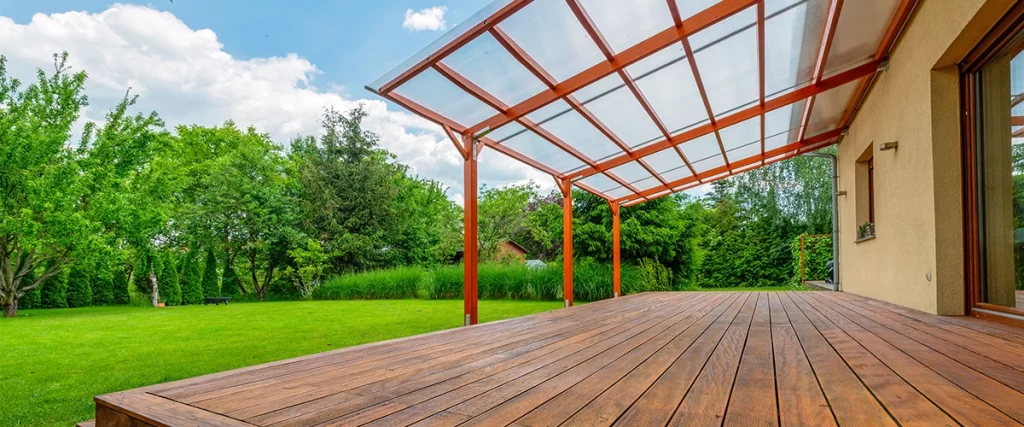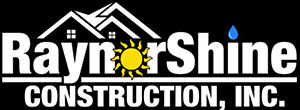If you live in Pinehurst, you already know the weather here can be a blessing and a curse. The warm Southern air, lush greenery, and seasonal rains give our town its signature charm. But here’s the downside: all that humidity and rainfall? It can absolutely wreck your deck.
Whether your deck is your favorite spot for coffee in the morning or weekend BBQs with friends, it’s a major investment. And if you’re not careful, the Pinehurst climate will age it way faster than you’d expect.
Let’s dive into exactly how Pinehurst’s unique weather wreaks havoc on decks—and more importantly, what you can do about it.

Why Pinehurst’s Climate is Extra Harsh on Decks
High Humidity Isn’t Just Uncomfortable – It’s Destructive
Pinehurst sits in the Sandhills region of North Carolina, which means we deal with some pretty high humidity, especially in the summer. That humidity might keep your skin from drying out, but it has the opposite effect on wood.
Constant moisture in the air gets absorbed by your deck boards. Over time, this leads to:
- Swelling and warping
- Splintering and cracking
- Soft spots and sagging
Even composite materials aren’t totally immune. They may resist rot, but mold and mildew can still latch onto them.
Rainfall Adds Fuel to the Fire
Annual rainfall in Pinehurst is around 45 inches—that’s higher than the national average. And it’s not just the amount of rain. It’s the way it falls—often in quick, heavy bursts during storms.
When water sits on your deck—or worse, when it gets trapped underneath—it can accelerate decay. Poor drainage and standing water are major culprits behind:
- Mold and mildew buildup
- Rotting joists and structural damage
- Loose or rusted fasteners
You see where this is going. Moisture is the enemy of deck longevity.
The Hidden Costs of Deck Neglect in Pinehurst
It’s easy to ignore a little discoloration or a small crack in the wood. But those “small” issues can snowball into major problems that:
- Lower your property value
- Cause safety risks like loose railings or spongy boards
- Force premature deck replacement
Deck building in Pinehurst isn’t cheap. Materials, labor, permits—it adds up quickly. Preventative care is always going to be the more affordable path.
How to Prevent Moisture Damage to Your Deck in Pinehurst
1. Choose the Right Materials From the Start
If you’re building a new deck or considering a replacement, selecting moisture-resistant materials is critical. Some top choices include:
- Pressure-treated wood: Affordable and resistant to insects and rot, but needs regular sealing.
- Cedar or redwood: Naturally more resistant to decay but still require some maintenance.
- Composite decking: Higher upfront cost but minimal upkeep and excellent moisture resistance.
2. Stay on Top of Sealing & Staining
Wood decks in Pinehurst need sealing at least once a year. That protective layer helps repel moisture, reduce UV damage, and prevent mildew.
Signs you need to reseal:
- Water doesn’t bead up anymore
- The deck looks faded or dried out
- You’re seeing more splinters or cracks
Use a high-quality, weatherproof stain and sealer rated for humid climates like ours.
3. Keep It Clean – Really Clean
Regular cleaning is one of the most effective things you can do to extend your deck’s lifespan.
- Sweep leaves and debris weekly (they trap moisture)
- Wash with a deck cleaner every few months
- Use a mold and mildew remover when needed
If you let dirt and organic matter sit, you’re basically inviting rot and mold to settle in.
4. Address Drainage Issues Fast
Water pooling on your deck or underneath it? That’s a big red flag.
Check for:
- Clogged or improperly angled gutters
- Soil that slopes toward your home
- Low spots under the deck that hold water
You might need to add a French drain, redirect downspouts, or regrade the yard.
5. Inspect Your Deck Seasonally
A seasonal inspection (spring and fall are best) lets you catch problems before they get worse. Look for:
- Loose or rusted nails/screws
- Cracks, splits, or signs of rot
- Wobbly railings or steps
- Mold or mildew spots
If you notice any issues, tackle them right away—or call a professional to handle it before it gets worse.
Best Decking Manufacturers for Moisture Resistance
When it comes to choosing materials that can stand up to Pinehurst’s wet climate, quality matters. Here are some of the best decking manufacturers in the industry:
Trex Decking
Composite decking known for durability and fade resistance. Great for humid and wet environments.
TimberTech
High-performance composite boards with a wood-like finish and strong mold and mildew resistance.
Fiberon
Eco-friendly composite materials with excellent moisture protection and low maintenance needs.
MoistureShield
Innovative core technology lets it be installed even in the ground or underwater. Ideal for wet climates.
Deckorators
Offers mineral-based composite decking with exceptional structural integrity and minimal thermal expansion.
Our Team Has Mastered Deck Protection in Pinehurst
We’ve been protecting decks in Pinehurst for years. Our team knows this region’s weather inside and out—and we know exactly how to fight back against it.
We don’t cut corners. We use the best materials, follow the best practices, and we treat every project like it’s in our own backyard.
Because when it comes to your home, you deserve quality work that lasts. Hiring the right team means fewer repairs down the road and more years enjoying your outdoor space.
If you’re ready to protect or restore your deck the right way, contact us at (910) 985-8064 and let’s get started.

Frequently Asked Questions
How often should I seal my deck in Pinehurst?
Once a year is usually enough, but if your deck gets a lot of sun or rain, you might need to do it more often.
Can I pressure wash my deck?
Yes, but use low pressure and the right tip to avoid damaging the wood. Don’t overdo it—gentle is best.
What’s the best type of wood for Pinehurst decks?
Pressure-treated pine is affordable and works well. Cedar and redwood are also good choices if you prefer natural wood.
How do I know if my deck is starting to rot?
Soft spots, discoloration, musty smells, and loose boards are all warning signs. If you’re unsure, have it inspected.
Should I cover my deck in the off-season?
A breathable deck cover or awning can help, especially in fall and winter. Just avoid plastic tarps—they trap moisture.
Is mold on my deck dangerous?
It can be. Mold makes your deck slippery and can also cause health problems. It needs to be cleaned ASAP.
What’s the cost of repairing water damage on a deck?
It depends on the extent of the damage. Catching it early can mean a small repair instead of a full rebuild.
Can composite decks get moldy, too?
Yes, but not as easily as wood. Mold won’t grow in the material, but it can grow on it if not cleaned.
Final Thoughts: Protect Your Investment
Living in Pinehurst means dealing with the elements, especially the moisture. But that doesn’t mean your deck has to suffer. With the right care, materials, and help, you can keep your outdoor space safe, beautiful, and ready for anything the weather throws your way.
And if you’re ready to let the pros handle your deck building project, contact us at (910) 985-8064. We’re here to help make your deck last for years to come.
